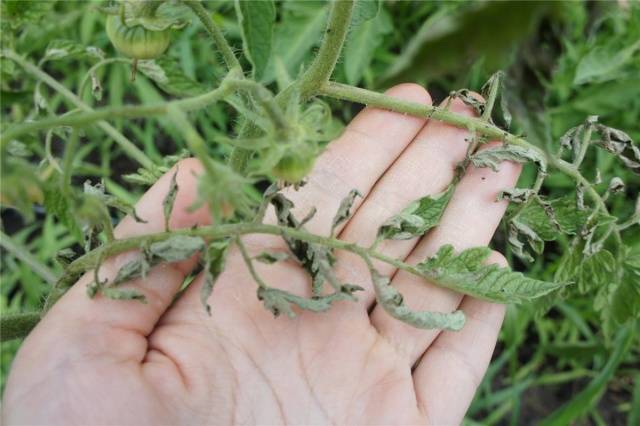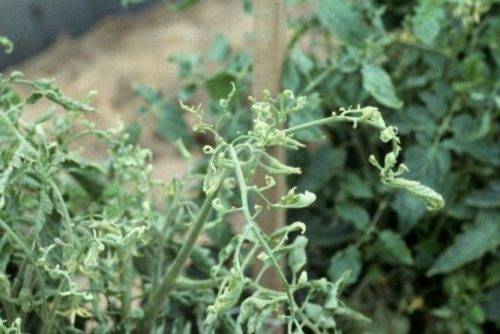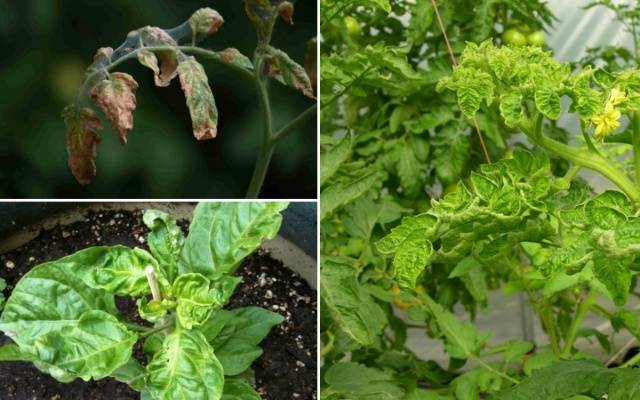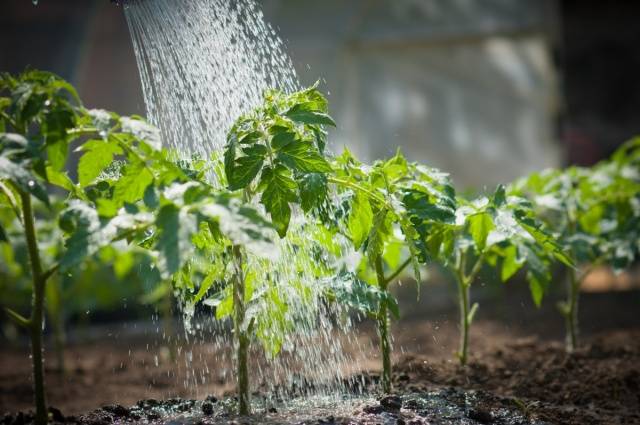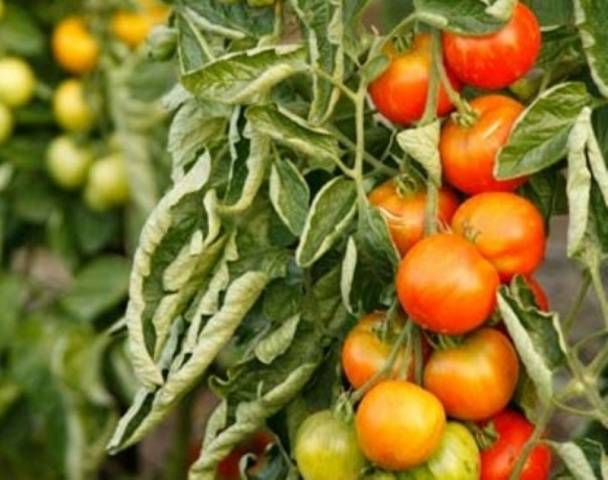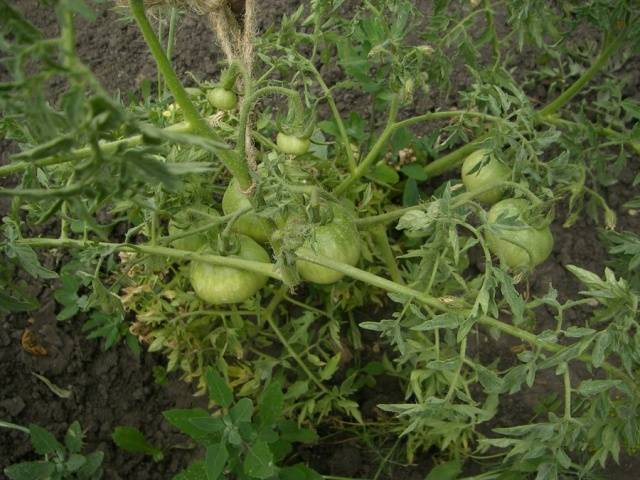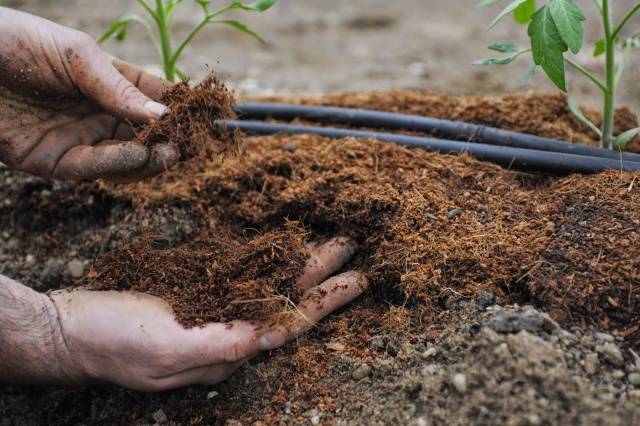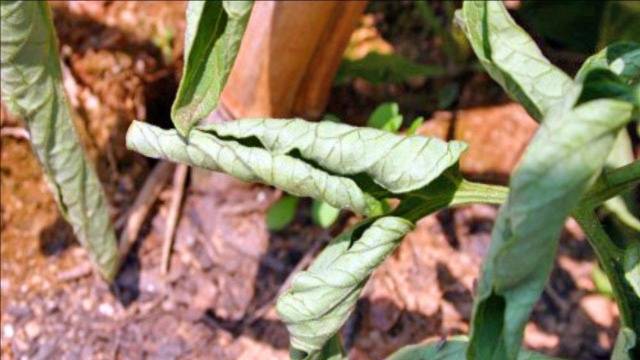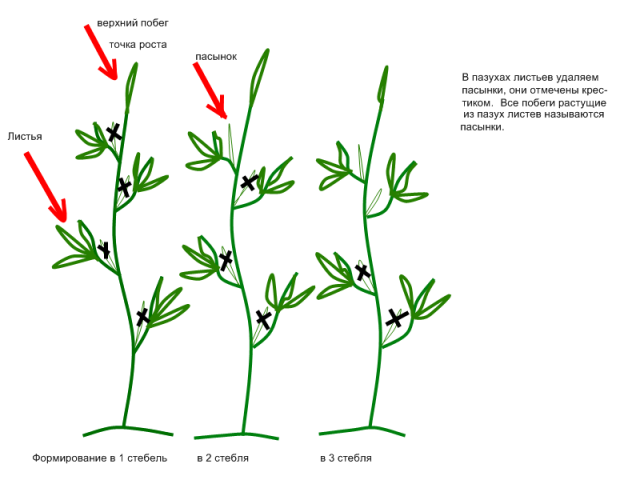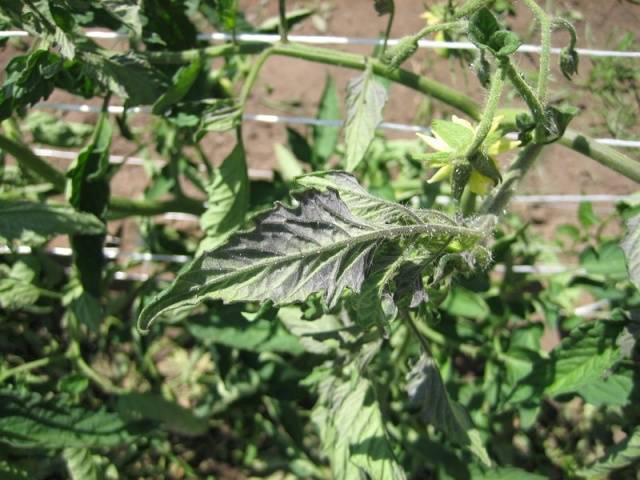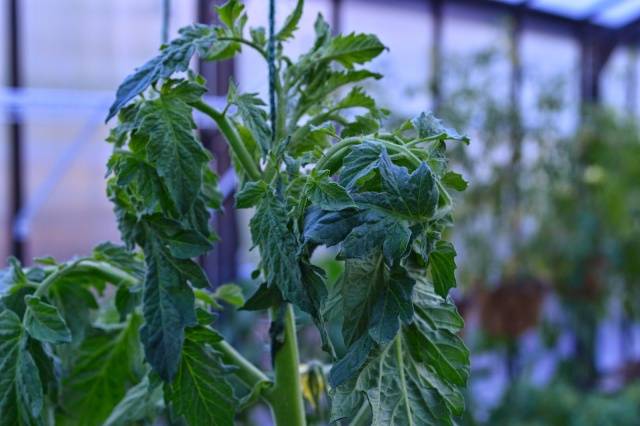Content
Tomatoes are grown today in almost every area, summer residents already know a lot about this culture and know how to cultivate it. But even with proper cultivation and regular care from certain problems can arise with tomatoes: either the ovaries will fall off, then the fruits will crack, then the bush will simply dry out. One of the most common situations is leaf curling on tomato bushes. It would seem that there is nothing wrong, but this leads to a violation of photosynthesis, as a result, the bush slowly dies. Therefore, if the leaves of tomatoes curl, it is necessary to find out the reason and take the necessary measures.
Why do the leaves of tomatoes curl, what illness can provoke this, and what to do so that the leaves on tomatoes no longer curl - there will be an article about this.
Why do tomato leaves curl?
There are two reasons why tomato leaves curl:
- Infectious.
- Non-infectious.
In the first case, tomato leaves curl as a result of a disease caused by some kind of infection. One such disease is cancer, for example. Generally, such diseases are called tomato bacteriosis.
Due to bacteriosis, tomato leaves curl downward, then young leaves on the top of the bush become smaller, the flowers also become small, they do not work ovaries.
Tomato bacteriosis is very dangerous - so you can lose all tomatoes in a short time. The disease spreads with infected seeds, insect pests such as aphids, whiteflies, leafhoppers or scoops can transmit the infection to tomatoes).
It is almost impossible to cure tomatoes with twisted bacteriosis leaves. Due to the fact that bacteriosis is very contagious, it is better to quickly remove the damaged tomato bushes and burn them. The land will have to be treated with antiseptics, you can use "Farmayod" - this will help to kill the pathogen.
What causes leaf curling in tomatoes
The question: “Why do tomato leaves curl?” Cannot be answered unequivocally. But, most often, the reason for this is improper agricultural technology.
Since the treatment of tomatoes will directly depend on the cause of the disease, the first step is to find out why the leaves of the tomatoes are bent.
Lack of moisture
Very often, the leaves on tomatoes begin to wither and curl for such a banal reason as insufficient watering... In this case, tomatoes themselves force their leaves to curl, because this will reduce their area, which means less water will evaporate from the surface of each leaf.
How can this problem be treated? To prevent the death of tomatoes, they just need to be watered. Watering tomatoes should be done correctly:
- do this at least once a week;
- even in severe drought, it is not worth watering the bushes more often than two or three times a week;
- at least a bucket of water must be poured under each bush (this applies to adult plants);
- it is worth making sure that water does not get on the leaves and stems of the tomatoes;
- when the fruits begin to pour in, the number of watering is reduced, otherwise the tomatoes will crack;
- it is better if the water for watering tomatoes is warm and settled.
Too much watering
Oddly enough, but an excess of water is fraught with the same as its lack: the leaves of tomatoes begin to curl, look lifeless and weak. It is easy to recognize the problem:
- firstly, you need to inspect the soil: if it is wet, then tomatoes are not affected by drought;
- secondly, the stems of too waterlogged tomatoes become fragile, and not lethargic;
- thirdly, in case of drought leaves curl inward, and during excessive moisture, on the contrary, the edges of the tomato leaves are wrapped outward, that is, up.
In a situation with waterlogged soil, the following can be recommended:
- Temporarily stop watering tomatoes.
- Stretch a film over the beds to protect the tomatoes from precipitation.
- Plant tomatoes in loose, well-permeable soil.
Good soil for tomatoes should contain large elements, it can be river sand, peat, sawdust - all this will help water to quickly absorb into the ground and go into deep layers... In extreme cases, if the tomato beds are in the lowlands, for example, you can add a handful of sand to each hole - so the roots of the tomatoes will not be constantly in the water.
High air temperature
It often happens that the leaves of the tomato curl from the intense heat. And in the beds, and even more so in greenhouses on the hottest summer days, tomato leaves can curl into a tube relative to the central vein.
You can help both greenhouse and ground tomatoes in such a situation:
- ventilate the greenhouse and even arrange drafts in it - tomatoes are not afraid of this;
- mulch the soil in the beds with tomatoes with a thick layer of organic matter (sawdust, humus, straw, spruce needles);
- create a shadow over the bushes using opaque covering materials;
- every evening spray on tomatoes a solution of urea (1.5 tablespoons per 10 liters of water) or pale pink potassium permanganate.
And, of course, The main "treatment" for withered tomatoes is regular watering.
Eating disorder
Lack of trace elements is also often the reason that the leaves of tomatoes curled.
What mineral is lacking in tomatoes, the appearance of the bushes will tell you:
- if there is not enough phosphorus for tomatoes, their leaves turn down, turn gray-green, and the veins, on the contrary, acquire a bright purple-red hue.
- when tomatoes are deficient in potassium, their petals curl upward from the edge to the middle. Moreover, only young, upper leaves curl, and whitish spots may appear on the fruits.
The treatment of tomatoes in such situations is simple - you just need to make up for the lack of the necessary trace elements by using phosphorus or potassium fertilizers (superphosphate and potassium nitrate, for example).
For organic lovers, wood ash is suitable, which contains both potassium and phosphorus, which are necessary for tomatoes. For quick relief to tomatoes, you need to stir the ash in a bucket of water and spray all affected bushes with this compound.
Excessive nitrogen in the ground can also cause tomato foliage to curl. You can find out about this by a too thick stem, along with small flowers or their complete absence. It is simple to rid the soil of excess nitrogen: you need to water the tomato beds abundantly with plain water.
Incorrect pinning
Experienced gardeners know that tomato bushes need to be shaped (this does not apply to all varieties and varieties of tomatoes). You need to remove the stepsons correctly, otherwise you can easily damage the bush and destroy most of the tomato crop.
Approach the question pinching tomatoes it is necessary competently:
- Young shoots are removed, the length of which does not exceed five centimeters.
- Too small stepchildren do not need to be cut off from tomatoes, since the wound will heal faster if a "stump" about a centimeter long is left in place of the appendix.
- You need to do pinching in the morning, so that the wounds on the tomatoes are weathered and a little tightened until the evening. The humid night climate encourages the spread of infections.
- On the eve of this procedure, it is recommended to water the tomatoes, this will make their stems more brittle and fragile - it will become easier to remove stepchildren, and injuries will be minimal.
- You need to do everything with disposable gloves or use a sterile instrument.
- The dangling stepchildren should be taken away from the tomato beds, as bacteria quickly develop in the waste.
When the rules of pinching were not followed, for example, too many shoots were removed on one day, or the gardener broke off the already overgrown stepsons (longer than five centimeters), the tomatoes experience severe stress... As a result, the leaves of tomatoes curl, they become lethargic and lifeless.
There is no need to deal with this problem, it is enough to provide the tomatoes with good care: airing, watering, not too hot climate. So the tomatoes will recover faster and continue their development.
The only thing that can be done: feed the tomatoes with complex mineral fertilizer or use a good biostimulator.
If the gardener does not have experience and knowledge, it is better, in general, not to carry out pinching: let the tomatoes be thickened, and the fruits small, than to lose the entire crop completely.
Insect pests
Panic on the topic: "The leaves of tomatoes curl, what to do!" inappropriate, since you need to act quickly here. First of all, it is necessary to inspect the bushes, because pests are a common reason that the leaves on the tomatoes twist and droop.
Why do the leaves of a tomato curl in this case? The reason is simple: pests suck the juice out of them. As a result, the leaf plate becomes thin and lifeless, dries quickly in the sun and wraps in a tube.
You can consider insects on the seamy side of the sheet - it is there that they most often hide. Such small pests are considered the most dangerous for tomatoes., as:
- aphid;
- red spider mite;
- whitefly larvae.
A couple of other symptoms can be added to the "curliness" of tomato foliage, such as the appearance of spots, yellowing, drying and dropping. In this case, the tomatoes should be treated with suitable insecticides as soon as possible.
How to spray tomatoes if leaves curl? - at different stages of plant development, preparations of different composition and effectiveness can be used. When there are no ovaries on tomatoes yet, chemically active substances and poisons are quite suitable: such insecticides act quickly and for sure, but they cannot accumulate in fruits.
If tomatoes are already ripening on the bushes, and the foliage is twisted, you can try biological agents such as Fitoverm, for example... Various folk recipes also help well, infusion from weeds (wormwood, ragweed and other weeds).
findings
Unfortunately, there is no unequivocal answer to the question of what to do when the leaves of tomatoes curl. The gardener will have to find out the cause of this problem, and then make a decision on how to deal with it.
It should be understood that there is no universal remedy for the "curliness" of tomatoes: in each situation, the treatment will be individual. There is also premature anxiety, for example, there are varieties of tomatoes, the genetic feature of which is slightly curled leaves... This happens due to the thinness of the sheet plate - the sheet hangs, and its edges are slightly wrapped. One of these varieties is cherry tomatoes.
There is only one conclusion: tomatoes need to be monitored and, of course, the plants should be properly cared for. Then the foliage will be healthy and beautiful, and the harvest will delight the owner.
